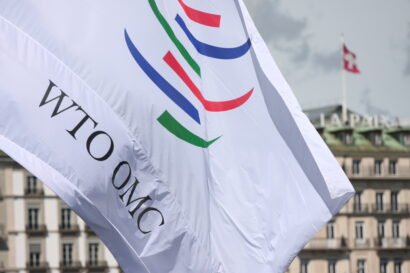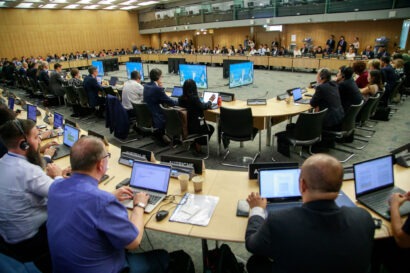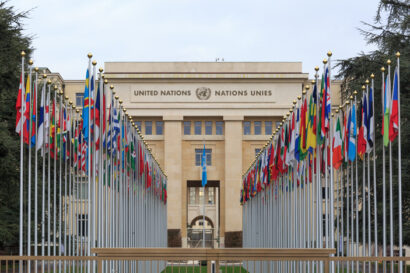Yesterday the OECD secretariat published its proposed ‘unified approach’ to update corporate tax rules for the digital era, or at least for one of the project’s two pillars. The proposal is designed to be “the basis for a negotiation that could result in a political agreement by mid-2020.” This agreement is to be made via the G20/OECD Inclusive Framework, which has 134 country members, including 24 from Africa (at the last count – it’s hard to keep up). I previously wrote about Africa’s response to this project, based on my participation at a conference organized by the African Tax Administration Forum. So, now that the OECD’s proposal is out, what can we say about its potential impacts on developing countries?
The new OECD proposal
The explicit purpose of Pillar 1 is to reallocate a share of multinational companies’ taxable profits to ‘market jurisdictions’. It includes three ‘amounts’:
- ‘Amount A’ gets all the attention. The top line of the whole project is often reduced to a point about how digitalization allows companies to have a significant participation in the economic life of a country without being physically present there. Amount A overcomes this by means of a ‘new taxing right’ that does not require a physical presence. It also gets tax nerds very excited because it allocates profits by means of a formula, which until recently was anathema to the OECD. But as I discuss below, it may not be where the biggest impact on developing countries is to be found.
- The Pillar 1 proposal would also allocate some profits (‘Amount B’) to companies’ marketing and distribution functions, and says that “the possibility of using fixed remunerations would be explored.” This only applies where there is a physical presence, so it might not seem as radical as Amount A. However, it is interesting for developing countries, for a couple reasons. First, they often complain that multinationals manipulate the profits of their distribution companies downwards as a tax planning technique, and that existing tax rules do not capture the value creation of localized marketing functions. Second, the use of a simplified approach here – something that ICTD research has pointed towards – also sets an interesting precedent.
- Let’s not forget ‘Amount C’. This allows a country to challenge the amount that it has received via amounts A and B, adjusting the total upwards by using traditional transfer pricing methods if it considers that appropriate. Even so, the language of Amount C in the secretariat proposal actually shifts the focus onto something else. It opens as follows: “Any dispute between the market jurisdiction and the taxpayer over any element of the proposal should be subject to legally binding and effective dispute prevention and resolution mechanisms,” something of a vexed topic for developing countries.
Here are some further questions, concerns and observations about the proposal:
We do not know how much, if anything, low-income countries will gain from the different permutations
There are a lot of reasons for this: many moving parts that might affect the proposal significantly; the lack of good quality data for developing countries; the need to model the dynamic effects of the proposals, that is how companies’ behavior might change. The OECD’s report to the G20 states its preliminary finding that “Overall, on average, low and middle-income economies would gain from Pillar One, experiencing a higher rate of increase in revenues than high-income economies even though, larger market jurisdictions will benefit more in absolute.”
It will be important to look at the winners and losers producing that average result when the OECD work is published. There’s a variety of ongoing work to model the impact of formulary approaches to allocating the tax base, but the reported findings – including those published by Alex Cobham, Tommaso Faccio, and Valpy FitzGerald this week – suggest that a sales-only approach, as proposed under Pillar 1, produces more losers among developing countries than one that incorporates sales and labour. By the key decision point of January 2020, we may still not be able to say with any confidence how low-income countries will be affected.
Carve-outs and thresholds could reduce the utility of Pillar 1 for low-income countries
While the scope of Pillar 1 is now greater than just the highly-digitalised companies whose tax affairs triggered discussions, it is likely to be limited in a number of important ways:
- The company threshold. In discussions at the International Fiscal Association (IFA) conference last month, it was suggested that the turnover threshold at which Amount A would apply could be more than €750m. Only the world’s largest companies will be affected. To take one example, Jumia, which is perhaps Africa’s best known e-commerce firm, turned over just €130m last year.
- The revenue threshold. Amount A will only kick in once sales and/or users exceed a certain amount. This can work against less wealthy countries, where sales are naturally lower in absolute terms. The proposal helpfully leaves open the possibility of adapting this threshold to the size of the market, as well as somehow including non-paying users.
- The residual profit threshold. Amount A only applies to a company’s ‘residual’ profits, which cannot be easily tied to specific parts of the business and are particularly high for digital companies. The residual profit would essentially be any profit above a fixed rate deemed to be the ‘routine’ profit rate, which will be negotiated within the Inclusive Framework. The higher that rate, the smaller the amount of profits that will be redistributed under Amount A. Chip Hartner, the US representative speaking at IFA, said his country’s position was that the residual profit threshold should be set high enough to isolate only the most important cases.
- Carve-outs. As expected, the proposal states clearly that the new approach is not suitable for oil, gas and mining companies, but it suggests that it may exclude commodities and financial services, and that it will apply to consumer-facing businesses. What does this mean for developing countries? They may benefit from the exclusion of sectors where their position is primarily within value chains, and where they do not have large consumer markets, but sectoral carve-outs could also limit the application of the ‘new taxing right’ significantly.
Put this all together, and under Amount A we have a redistribution of the tax base that low-income countries may gain from. Their gains will be limited to companies larger than a certain overall threshold, which have a presence in their market above a certain threshold, only in certain sectors, and only to their profits above a certain amount. And all of those ‘certain’ elements are still under negotiation!
What difference will segmentation make?
The proposal suggests at various points that each of its elements might not apply uniformly, but might apply differently between and within companies, according to different segments, business lines, sectors and/or regions. What will this mean for low-income countries? If any fixed return under Amount B were to vary by sector, the value of the return in sectors of relevance to developing countries would be a critical matter for negotiation. Meanwhile, the possibility of a regional segmentation under Amount A needs careful consideration, given that Africa is commonly described as the continent with the highest return on investment.
The potential costs of participation
In addition to the potential gains for lower-income countries, there are a few costs from participation that merit consideration. For example, some larger developing countries currently tweak international tax rules to give themselves a larger share of the tax base. Wilson Prichard and I have written about how China adds to international tax rules to give itself a ‘market premium’, which is now covered by Amount B. Others have implemented, or are considering, unilateral measures to help them tax digital companies, such as India’s equalization levy. The eventual package proposal from the Inclusive Framework is likely to include a moratorium on these kinds of measures, which may limit lower-income countries’ ability to innovate or to emulate. The text of the secretariat proposal makes clear that they will also be subject to mandatory and binding dispute settlement procedures. This could mean that, regardless of how well the eventual settlement works for them, lower-income countries that join may be unable to deviate from it. A final point is that, while this is a simplification, it is also a whole new set of tax rules that will need to be applied domestically, creating an opportunity cost for countries that are often still getting the legislative and administrative basics in place.
The OECD secretariat responded robustly to the Tax Justice Network’s claims that developing countries would not gain from its proposal, by pointing out that developing countries are now at the table. As the head of the BEPS project Pascal Saint-Amans said “We now serve all these countries and a compromise will have to be found among all of them.” We may gain some indications of the politics of negotiations between developed and developing countries inside the Inclusive Framework as we see how the issues outlined above are worked through in the months ahead.
Stay tuned via our new page on Taxing the Digitalising Economy.



